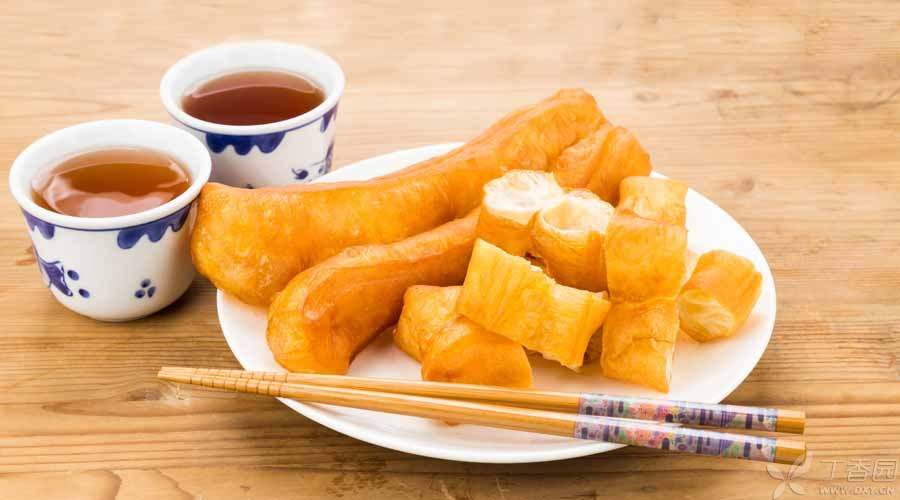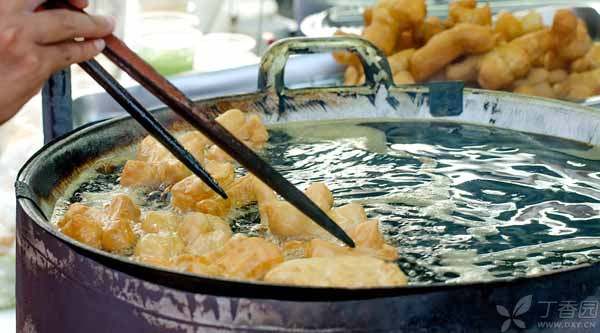
A song [soya-bean milk fried dough sticks] once resonated with many people because it sang the sweet state of lovers. Many Chinese eat breakfast in the same way, and have eaten it for many years.
However, fried dough sticks may contain an unhealthy element-aluminum.
Do you know which foods contain aluminum? Does it affect our health in what?
Where does aluminum in food come from?
Aluminum is a rich metal element in the earth’s crust. It is also widely used in daily life and can be used to make cooking utensils, food packaging materials, etc. Therefore, aluminum may exist in diet, but the natural content of aluminum in food is usually not high.
The survey shows that the aluminum people eat mainly comes from aluminum-containing food additives.
Which foods are aluminum-containing additives mainly used in?
When it comes to food additives containing aluminum, some people may think of alum, because the scientific name of alum is [potassium aluminum sulfate dodecahydrate]. Alum is usually used in the traditional production process of fried dough sticks and other fried foods to form fluffy taste.
But in fact, in addition to fried dough sticks, beans, candy, puffed food, milk powder, sugar, seasonings, etc. may also contain aluminum, and even many common foods such as steamed bread and noodles may contain [aluminum-containing additives].
What is the harm of aluminum to health?
It is said that excessive intake of aluminum can lead to anemia and osteoporosis. At the same time, excessive aluminum in the body is difficult to excrete from the kidney, toxic to the brain and nerve cells, and causing Alzheimer’s disease. Is this true?
Although people will take in some aluminum through diet, the intake is not high and no cases of acute poisoning have been found so far.
Aluminum is not easy to be discharged after entering the human body. In the long run, it will accumulate in the human body, thus affecting the health of bones and nervous system and causing chronic damage.
So, will aluminum lead to senile dementia?
Although some studies suggest that excessive intake of aluminum is related to the occurrence of Alzheimer’s disease, the European Food Safety Administration (EFSA) conducted a risk assessment of aluminum in diet in 2008, showing that:
Based on the available evidence, it is not believed that aluminum intake from food will lead to the risk of dementia in the elderly.
The assessments conducted by the Joint Expert Committee on Food Additives of the United Nations Food and Agriculture Organization/World Health Organization (JECFA) in 2006 and 2011 also believe that the current research cannot draw the conclusion that aluminum can lead to senile dementia.
Therefore, the relationship between aluminum and senile dementia is uncertain.

How much aluminum is safe for people to consume every day?
The Joint Expert Committee on Food Additives (JECFA) of the Food and Agriculture Organization of the United Nations/World Health Organization set the [Provisional Weekly Tolerable Intake] (PTWI) of aluminum as 2 mg per kilogram of body weight per week in 2011.
This is equivalent to a 60 kg adult eating less than 120 milligrams of aluminum per week, which will not lead to accumulation of aluminum or cause health damage.
It should be reminded that the amount of aluminum needed to affect health far exceeds the [tentative weekly tolerable intake] stipulated by JECFA, and the average person need not worry too much.
If the amount of aluminum eaten by ordinary people only exceeds this amount occasionally, not for a long time, it usually will not affect their health. However, if the long-term diet structure is single, there may be risks.
How much aluminum do we eat?
In 2012, the National Food Safety Risk Assessment Center conducted a comprehensive risk assessment of aluminum intake by Chinese residents through food. The assessment results showed that:
- The aluminum that our residents eat, On average, It is lower than PTWI. However, the regional differences in aluminum intake of Chinese residents are very large. For example, the average intake of northerners who like pasta exceeds PTWI. Children under 14 years old and some people who often eat foods with high aluminum content have certain health risks. The largest source of daily aluminum intake for Chinese residents is aluminum-containing food additives, accounting for about 75%.
Therefore, the Government has revised the usage specifications of aluminum-containing additives. Since July 1, 2014, many restrictions have been imposed. Some aluminum-containing food additives have been banned from use, especially in the production of steamed bread, steamed sponge cakes, puffed foods and other foods.
However, fried flour products, batter for hanging paste, wrapping powder and frying powder are excluded from this specification, so specific groups should pay attention to eating less of these kinds of food.
How to prevent excessive intake of aluminum in daily life?
First of all, everyone should try to keep a balanced diet.
-
Don’t eat pasta such as fried dough sticks and oil cakes every day for breakfast. You can eat it with rice, coarse cereals and other foods to avoid eating too much aluminum due to a single diet.
-
The aluminum content of jellyfish and other seafood is also on the high side. It is suggested to reduce the consumption frequency of jellyfish and other seafood. If you want to eat, you must soak and clean it repeatedly.
-
Some starch foods, such as vermicelli, vermicelli, vermicelli, jelly, cold skin, etc., are often added with aluminum-containing additives in order to make the taste more sinewy, and people can eat less.
Secondly, when purchasing food, pay attention to whether there are aluminum-containing additives on the food label. If there are, buy less and eat less as much as possible.
In addition, as children may face a greater risk of exceeding the standard of aluminum, parents and teachers should guide children to minimize the intake of aluminum-containing foods, such as the aforementioned fried flour products, batter for hanging paste, wrapping powder, fried powder-related foods, etc.
Finally, the use of aluminum utensils and aluminum foil should be minimized. When using aluminum utensils, avoid dissolving aluminum by containing acidic foods (such as tomatoes, vinegar, etc.). Also, brush aluminum cooking utensils with steel wire balls, etc. to avoid damage to the oxide film protective layer on the surface and increase the removal of aluminum.
Responsible Editor: BruceLi
Copyright of Clove Garden. No reprinting is allowed without permission.
References:
1. IPCS. Aluminium. Environmental Health Criteria 194. Geneva: WHO; 1997.
2. Hong Kong Centre for Food Safety. Risk Assessment Study, Report No. 35. Aluminum Content in Food.
3. Panel on Food Additives, Flavourings, Processing Aids and Food Contact Materials (AFC). Scientific Opinion of AFC: Safety of aluminium from dietary take. EU: EFSA; 2008.
4. Joint FAO/WHO food standards programme, Codex committee on food additives, 45th session, Beijing, China, 18-22 March 2012: Recommendations for proposals for aluminum-containing food additives of the GSFA. CX/FA/13/45/8. December2012
